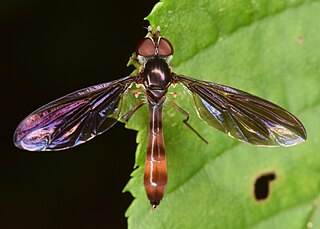
Convolvulaceae, commonly called the bindweeds or morning glories, is a family of about 60 genera and more than 1,650 species. These species are primarily herbaceous vines, but also include trees, shrubs and herbs. The tubers of several species are edible, the best known of which is the sweet potato.

Graphium is a genus of mostly tropical swallowtail butterflies commonly known as swordtails, kite swallowtails, or ladies. Native to Eurasia, Africa, and Oceania, the genus is represented by over 100 species. Their colouration is as variable as the habitats they frequent; from rainforest to savannah. Some possess tails which may be long and swordlike, while others lack any hindwing extensions. Graphium species are often sighted at mud puddles.

Graphium antiphates, the five-bar swordtail, is a species of papilionid butterfly found in south and southeast Asia. The species was first described by Pieter Cramer in 1775.

Graphium epaminondas, the Andaman swordtail, is a beautiful butterfly found in India that belongs to the swallowtail family. It was earlier considered a subspecies of fivebar swordtail but has now been identified as a separate species.

The Syrphini are a tribe of hoverflies.

Ocyptamus is a large and diverse genus of over 200 species of hoverfly mostly found in the Neotropical region. It is likely that many of these species will be discovered to be synonyms though many others await description.
Graphium euphratoides is a butterfly found in Mindanao in the Philippines that belongs to the swallowtail family.

Hypocritanus fascipennis is a species of syrphid fly in the family Syrphidae. Until 2020, it was classified in the genus Ocyptamus.

Ocyptamus parvicornis, the scarlet hover fly, is a species in the family Syrphidae.

Ocyptamus fuscipennis is a species of syrphid fly in the family Syrphidae. This fly can be found throughout North America, as well as in Cuba. In Puerto Rico, this species in its larval stage is an predator of autumn cohorts of Toxoptera citricida. Adult flies are known to visit Xyris tennesseensis flowers.

Ocyptamus cubanus is a species of syrphid fly in the family Syrphidae.

Hypocritanus lemur is a species of syrphid fly in the family Syrphidae. Until 2020, it was classified in the genus Ocyptamus.
Pseudoscaeva is a genus of hoverfly in the Neotropical region, formerly included in the genus Ocyptamus, which was split after researchers determined it was not monophyletic.
Orphnabaccha is a genus of hoverfly in the Neotropical region, formerly included in the genus Ocyptamus, which was split after researchers determined it was not monophyletic.

Hybobathus is a genus of hoverfly in the Neotropical region, formerly included in the genus Ocyptamus, which was split after researchers determined it was not monophyletic.
Animal Ethics is a nonprofit organization formed to promote discussion and debate around issues in animal ethics and to provide information and resources for animal advocates. They also do outreach work in several countries on the issue of speciesism. Their aim is to create a world where moral consideration is extended to all sentient beings. The organization's website covers topics such as speciesism, sentience, veganism and wild animal suffering and has content translated into several languages.

Victoriana is a genus of hoverflies in the family Syrphidae. This genus, corresponding to the former Ocyptamus melanorrhinus species group, is currently divided into three species groups: V. attenuata, V. melanorrhina and V. parvicornis species groups.

Pelecinobaccha costata, the cobalt hover fly, is a species of fly in the family Syrphidae. It is distributed from southern Ontario and the eastern United States. The larvae are predators of scale insects.












